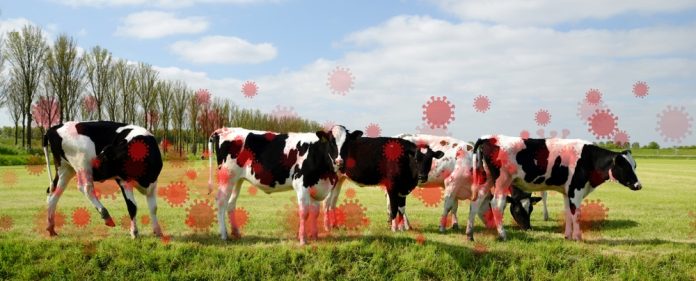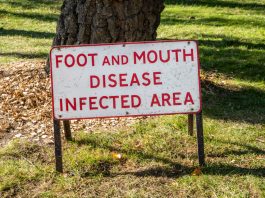Researchers have discovered that the H5N1 strain of bird flu in cattle does not represent an increased threat to people.
This particular strain of bird flu in cattle was first detected in March 2024.
Since then, the virus has since been further detected in cattle on 891 farms across sixteen states in the US.
The strain is thought to be predominantly transmitted through milking and movement of infected animals or contaminated equipment between farms or states.
Implications of animal flu on human health
The research into bird flu in cattle follows the first US death from avian influenza, reported in a man who had been in contact with infected birds in a backyard flock.
The man, who was older than 65 and from Louisiana, had been hospitalised with severe respiratory symptoms, state health officials said earlier this month.
In light of this, the UK government recently confirmed it had prepared five million vaccine doses in case of an avian influenza pandemic this winter.
The vaccine, based on a current H5 avian influenza virus, will be manufactured by UK-based healthcare company CSL Seqirus UK Limited.
The purchase has been made as part of long-established plans to boost the UK’s fight against dangerous animal diseases and secure vaccines for a wider range of pathogens.
Animal influenza: Cattle vs birds
Influenza in birds and cattle can cause similar symptoms, but there are differences in how the disease affects the animals.
Bird flu in cattle commonly causes low appetite, reduced milk production, abnormal milk appearance, fever, dehydration, and lethargy.
On the other hand, in birds, it can lead to Sudden death, lethargy, ruffled feathers, head or limb swelling, bruising, respiratory signs, and diarrhoea.
How bird flu can spread to humans
Bird flu is spread by close contact with an infected animal (dead or alive).
This includes:
- Touching infected animals.
- Touching droppings or bedding.
- Killing or preparing infected poultry for cooking.
- Markets where live birds are sold can also be a source of bird flu. Humans should avoid visiting these markets if they’re travelling to countries that have had an outbreak of bird flu.
Humans can’t catch bird flu by eating fully cooked poultry or eggs, even in areas with an outbreak of bird flu.
The H5N1 strain can’t effectively be transmitted to humans
The research discovered that the H5N1 strain of bird flu in cattle does not pose an increased threat to humans for one key reason.
Researchers at the Pirbright Institute, located near Woking, compared cattle and goat H5N1 viruses with the dominant avian-origin strain in the UK.
Professor Munir Iqbal, a researcher at the institute, explained: “We conducted a rapid risk profile of the receptor binding properties and fusion pH of ‘original’ dairy cattle, emerging mutations in dairy cattle, and goat H5N1 viruses.
“None of the tested viruses exhibited binding to the human receptor analogue – suggesting the currently circulating bovine H5N1 viruses are unlikely to be able to efficiently transmit between humans.”
Further mutations must be addressed
However, it remains to be determined whether further mutations will emerge if the virus continues to infect and spread amongst dairy cattle, with continuing opportunities to adapt to bovines.
Professor Iqbal commented: “Addressing this question will contribute to a better understanding of the H5N1 virus and its adaptation in cattle.”
He concluded: “Continued surveillance and risk assessment of circulating H5N1 viruses remain a top priority to mitigate their potential impact on public health and the agricultural sector.”









